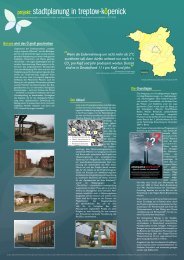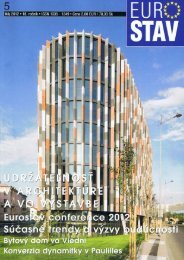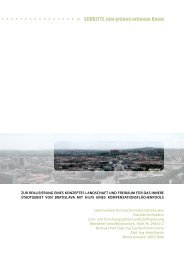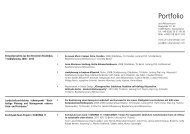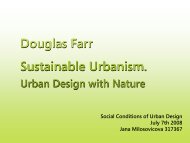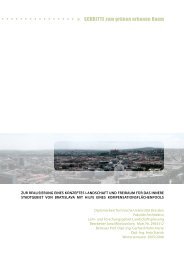Thesis document - Jana Milosovicova - Urban Design English
Thesis document - Jana Milosovicova - Urban Design English
Thesis document - Jana Milosovicova - Urban Design English
- No tags were found...
Create successful ePaper yourself
Turn your PDF publications into a flip-book with our unique Google optimized e-Paper software.
ing population 5 ) – more than a half of it being sealed surface 6 , whichinevitably and directly affects the climate.Fig. 4 “Natural” landscape: 75% evapotranspiration,25% groundwater rechargeand runoff,86% of “consumed” net radiation (Schmidt2008)Fig. 5 <strong>Urban</strong> “landscape”: reduced evapotranspiration,increased thermal radiation, increasedheat, “urban heat island”The <strong>Thesis</strong> claims that the physical character of built structures – whichaffects the climate by causing the UHI effect – has not been properlyreflected in the way in which we have been building cities and howwe have been reflecting on, and involving, natural processes (energyflows and water cycle) in urban design and planning. Therefore, thenatural parameters will be examined, and the necessity for their betterunderstanding in the professional guidance of the urbanization processwill be stressed.MethodThe <strong>Thesis</strong> focuses on the physical structure of the built environmentand on how this affects the climate. First, the literature on climaticaspects of cities in cool moderate climate is reviewed and these characteristicsdescribed. The typical features are in particular: a) the energyflow and water cycle changes resulting from sealing the surfaces, creatinghigh concentrations of man-made built objects and withdrawingvegetation from urban areas (fig. 4 and 5); as well as b) the urbanform and geometry affecting the insolation and ventilation conditions incities; both a) and b) resulting in the <strong>Urban</strong> Heat Island (UHI).Second, the <strong>Thesis</strong> revises climate related urban design guidelines andpolicies for the City of Berlin, as an exemplary city in the cool moderateclimate zone, and for other cities in the same climate zone, to identifythe weakness and strengths related to the recommendations by climatologistsand climate-specialized urban designers/planners.Third, reflecting the findings in the literature review, a set of “Climate-Sensitive <strong>Urban</strong> <strong>Design</strong> Guidelines” (CSUD) addressing the UHI mitigationand helping alleviate the anticipated heat waves in the coolmoderate climate cities, is recommended and presented in text andgraphics.And fourth, to illustrate how such guidelines can be applied, the urbandesign proposal for Berlin’s Heidestrasse/Europacity has been chosen asa case study to critically examine its alledged CSUD strategies againstthe findings in this <strong>Thesis</strong>. As a final step, amendments to the originalplan as well as complementing recommendations are suggested.5 Statistisches Bundesamt Deutschland, online6 Bundesinstitut für Bau-, Stadt- und Raumforschung, online10Climate Sensitive <strong>Urban</strong> <strong>Design</strong> in Moderate Climate Zone: Responding to Future Heat Waves. Case Study Berlin Heidestrasse/Europacity



